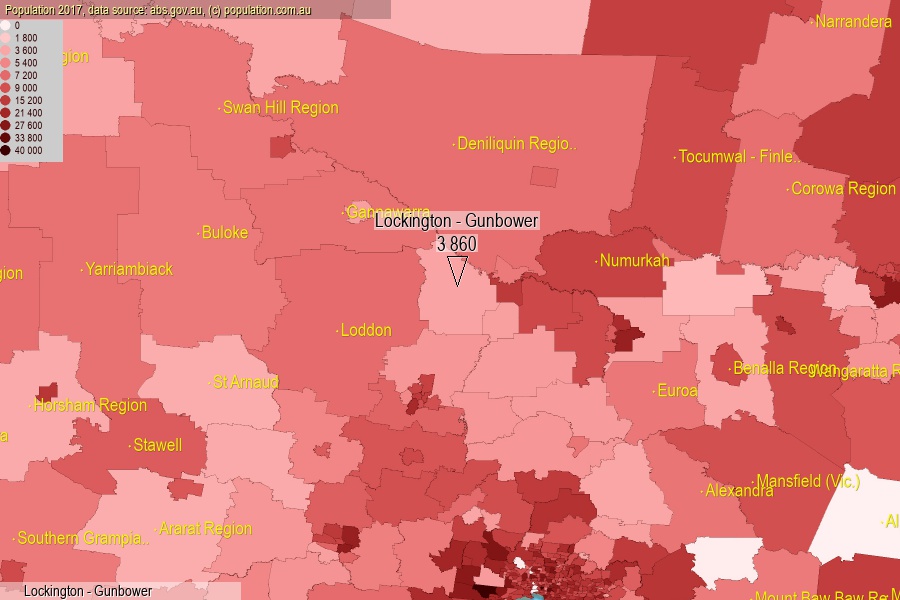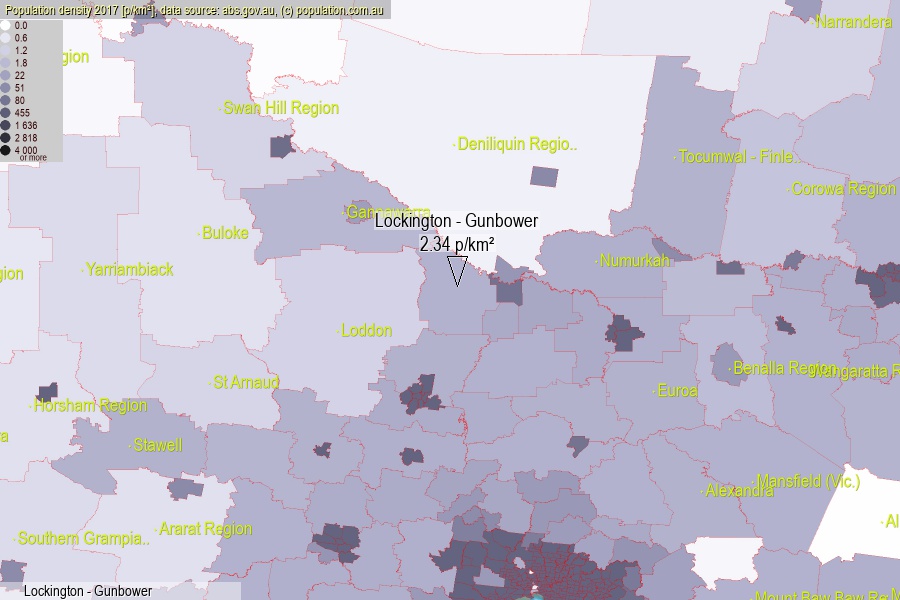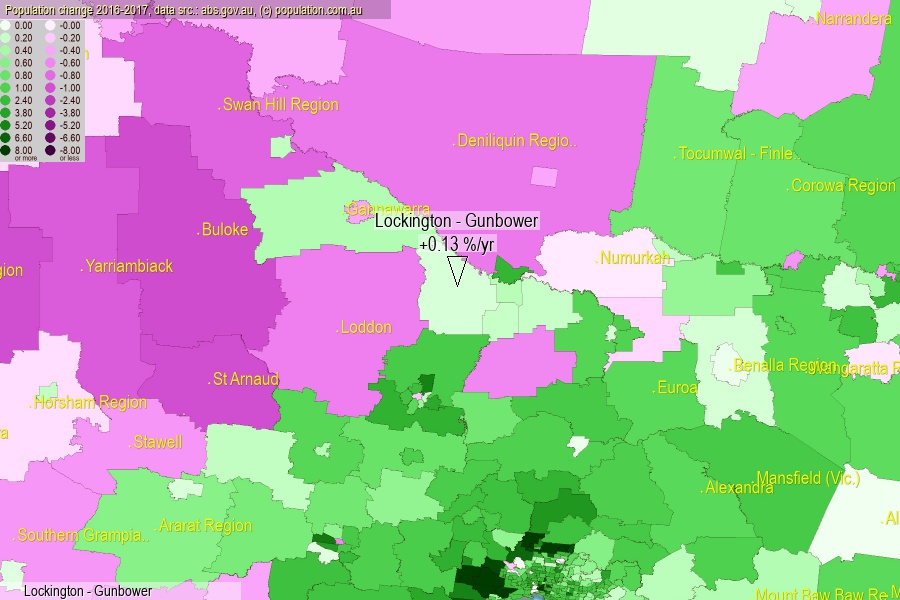 population.com.au
population.com.auLast official estimated population of Lockington - Gunbower (as Statistical Area Level 2) was 3 860 people (on 2017-06-30)[2]. This was 0.02% of total Australian population and 0.06% of VIC population. Area of Lockington - Gunbower is 1 646.40 km², in this year population density was 2.34 p/km² . If population growth rate would be same as in period 2016-2017 (+0.13%/yr), Lockington - Gunbower population in 2025 would be 3 900. [0]



Click to enlarge. Lockington - Gunbower is located in the center of the images.
Population [people], population density [p./km²] and population change [%/year] [2]
View borders » (new window) [4]
[1991-1992] +1.42 %/Yr.
[1992-1993] +0.55 %/Yr.
[1993-1994] +0.65 %/Yr.
[1994-1995] +0.87 %/Yr.
[1995-1996] +0.20 %/Yr.
[1996-1997] -0.39 %/Yr.
[1997-1998] +0.74 %/Yr.
[1998-1999] +2.44 %/Yr.
[1999-2000] +2.60 %/Yr.
[2000-2001] +1.56 %/Yr.
[2001-2002] -0.37 %/Yr.
[2002-2003] -1.84 %/Yr.
[2003-2004] 0.00 %/Yr.
[2004-2005] -0.80 %/Yr.
[2005-2006] -0.45 %/Yr.
[2006-2007] -1.94 %/Yr.
[2007-2008] -0.94 %/Yr.
[2008-2009] -1.07 %/Yr.
[2009-2010] -2.98 %/Yr.
[2010-2011] -3.07 %/Yr.
[2011-2012] +0.52 %/Yr.
[2012-2013] +0.16 %/Yr.
[2013-2014] -0.05 %/Yr.
[2014-2015] -0.03 %/Yr.
[2015-2016] +0.47 %/Yr.
[2016-2017] +0.13 %/Yr.
[0] Calculated with linear interpolation from officially estimated population
[1] Read more about SA2 and Australian Statistical Geography Standard (ASGS) on abs.gov.au
[2] Population data from Australian Bureau of Statistics (Population and density: 2017; change: 2016-2017)
[3] Digital Boundaries: Australian Statistical Geography Standard (ASGS) 2016.
[4] Border coordinates are simplifyed using Ramer-Douglas-Peucker algorithm.